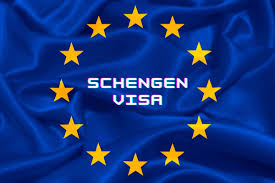The Schengen Visa is a document that allows its holder to travel freely within the Schengen Area, which comprises 27 European countries. This visa is one of the most popular in the world due to the ease it offers travelers to move across multiple nations without undergoing border controls. Understanding the intricacies of the Schengen Visa can be crucial for tourists, business travelers, and individuals seeking short-term stays in Europe.
Overview of the Schengen Area
The Schengen Area represents a collective agreement among participating European countries to abolish internal borders, allowing for unrestricted movement of people, goods, services, and capital. The area includes 23 of the 27 EU member states and four non-EU members: Iceland, Liechtenstein, Norway, and Switzerland. Notably, some EU countries like Ireland are not part of the Schengen Agreement, while non-EU members such as Norway and Switzerland participate fully.
Types of Schengen Visas
Uniform Schengen Visas (USV):
- Type A (Airport Transit Visa): Allows travelers to transit through the international zone of an airport in a Schengen country without entering the Schengen Area.
- Type C (Short-Stay Visa): The most common type, permitting stays of up to 90 days within a 180-day period. It can be issued for tourism, business, family visits, or other short-term purposes.
Limited Territorial Validity Visas (LTV):
- These visas are valid only for the Schengen State(s) specified when the visa is issued. The holder cannot travel to any other Schengen country not specified in the visa.
National Visas (Type D):
- Issued for long-term stays in a specific country, typically for purposes such as studying, working, or residing permanently. While this is not a Schengen Visa per se, it allows movement within the Schengen Area for short durations.
Application Process
1. Determine Eligibility:
- Citizens of many countries need a Schengen Visa to enter the Schengen Area. Always check the specific requirements based on your nationality.
2. Choose the Type of Visa:
- Depending on the purpose of travel, select the appropriate visa category (e.g., tourism, business, study).
3. Gather Required Documents:
- Visa application form: Completed and signed.
- Passport: Valid for at least three months beyond the intended stay, with at least two blank pages.
- Photographs: Two recent passport-sized photos.
- Travel itinerary: Including flight reservations and accommodation bookings.
- Travel insurance: Minimum coverage of €30,000 for medical emergencies.
- Proof of financial means: Bank statements, sponsorship letters, or proof of employment.
- Purpose of travel: Invitation letters, conference registrations, or detailed travel plans.
4. Schedule an Appointment:
- Submit the application at the consulate or visa application center of the country you plan to visit first or spend the most time in.
5. Attend the Visa Interview:
- Be prepared to answer questions about your travel plans and provide biometric data (fingerprints and photograph).
6. Pay the Visa Fee:
- The standard fee for a short-stay Schengen Visa is €80 for adults and €40 for children aged 6 to 12. Some categories, like students or researchers, may have reduced fees or exemptions.
Processing Time
The processing time for a Schengen Visa is typically 15 calendar days from the date of the application. However, it can take longer during peak travel seasons or if additional documentation is required.
Rights and Obligations
Holding a Schengen Visa does not guarantee entry into the Schengen Area. Border authorities may still request proof of financial means, return tickets, or accommodation details upon arrival. Visa holders must adhere to the duration and purpose of their stay as stated in the visa. Overstaying or violating the terms can lead to penalties, including future visa denials.
Benefits of the Schengen Visa
Ease of Movement:
- Travel across 27 countries without undergoing border controls, making it ideal for multi-country European trips.
Economic Opportunities:
- Business travelers can attend meetings, conferences, and exhibitions across multiple countries with a single visa.
Cultural Exchange:
- Tourists can explore diverse cultures, historical sites, and natural landscapes without the hassle of multiple visas.
Streamlined Procedures:
- The standardized application process and requirements simplify the visa application, even for first-time travelers.
Challenges and Considerations
Varying Requirements:
- Despite standardization, each country may have specific requirements or processes, leading to potential confusion.
Processing Delays:
- High demand, especially during peak seasons, can result in delays. Applicants are advised to apply well in advance.
Limited Validity:
- The 90/180 rule requires careful planning for those needing frequent or extended stays.
Future Developments
The Schengen Visa system continually evolves to enhance security, streamline processes, and improve traveler experiences. Upcoming changes may include more digital applications, biometric enhancements, and revised fee structures.
The Schengen Visa remains a cornerstone of European travel, offering unparalleled access to some of the world's most sought-after destinations. While the application process requires careful preparation and adherence to specific guidelines, the benefits of holding a Schengen Visa far outweigh the challenges. Whether for tourism, business, or cultural exploration, this visa opens doors to a continent rich in history, diversity, and opportunity.
Contact Us
Phone: +1(571)207-8839
Email: info@legitglobaldocs.com
Website: https://www.legitglobaldocs.com/





Comments
Post a Comment